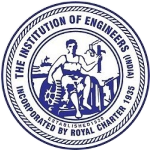TOMOGRAPHIC IMAGE BASED PAVEMENT CONDITION ASSESSMENT USING MACHINE LEARNING APPROACH
Abstract
The tomography is an emerging method of nondestructive concrete pavement diagnostics which can be used for improved quality assurance/quality control during concrete pavement construction and assist in rehabilitation decision making Pavement condition assessment provides information to make more cost-effective and consistent decisions regarding management of pavement network. Generally, pavement distress inspections are performed using sophisticated data collection vehicles and/or foot-on-ground surveys. In either approach, the process of distress detection is human-dependent, expensive, inefficient, and/or unsafe. Automated pavement distress detection via road images is still a challenging issue among pavement researchers and computer-vision community. In recent years, advancement in machine learning has enabled
researchers to develop robust tools for analysing pavement tomographic images at unprecedented accuracies. Nevertheless, machine learning models necessitate big ground truth dataset, which is often not readily accessible for pavement field. In number google street-view images were extracted, images from Mumbai-Pune expressway, Dehu road were extracted manually annotated for classification. Afterward, YOLO (you look only once) machine learning framework was implemented to train the model using the labeled dataset of Indian road. In the current study, the model is use to classify the distresses and quantify their severity simultaneously. Various pavement condition indices are developed by implementing various machine learning algorithms using the YOLO machine learning framework for distress classification segmentation and distress densification. The output of the distress classification and segmentation models are used to develop a comprehensive pavement condition tool which rates each pavement Tomographic images according to the type and severity of distress extracted. As a result, we are able to avoid over-dependence on human judgement throughout the pavement condition evaluation process. The outcome of this study could be conveniently employed to evaluate the pavement conditions during its service life and help to make valid decisions for rehabilitation or reconstruction of the roads at the right time.
Downloads
References
Arash Hosseini, Ahmed Faheem, Hans Titi, Scot Schwandt, Evaluation of the long-term performance of flexible pavements with respect to production and construction quality control indicators, 2019
Christina Plati, Sustainability factors in pavement materials, design, and preservation strategies: A literature review ,by 2019
Abhishek Jindal, G.D. Ransinchung R. N., Behavioural study of pavement quality concrete containing construction, industrial and agricultural wastes, 2018
Michael Tarimo, Paulos Wondimu, James Odeck, Jarda Lohne, Ola Laedre Sustainable roads in Serengeti National Park: gravel roads construction and maintenance, 2017.
Gueta, L. B. and A. Sato (2017). Classifying road surface conditions using vibration signals. Asia-Pacific Signal and Information Processing Association Annual Summit and Conference (APSIPA ASC), 2017, IEEE.
Alqudah, Y. A. and B. H. Sababha (2017). On the analysis of road surface conditions using embedded mobile phone sensors, IEEE: 177.
Abhay Tawalare, K.Vasudeva Raju, Pavement Performance Index for Indian rural roads, 2016.
Aman A Bolar, Solomon Tesfamariam, Rehan Sadiq, Framework for prioritising infrastructure user expectations using Quality Function Deployment(QFD), 2017
Shibin Lin, Jeramy Ashlock, R Christopher Williams, Nondestructive quality assessment of asphalt pavements based on dynamic modulus, 2016
P. Forsythe, "Construction service quality and satisfaction for a targeted housing customer", Engineering, Construction and Architectural Management, vol. 23, no. 3, pp. 323-348, 2016
M. Jaeger and D. Adair, "Perception of TQM benefits, practices and obstacles", The TQM Journal, vol. 28, no. 2, pp. 317-336, 2016.
R. N. Lussier, C. Bandara and S. Marom, “Entrepreneurship success investigation in Sri Lanka”, The World Journal of Entrepreneurship, Management and Sustainable Development, vol. 12, no. 3, pp. 102-112. 2016.
L. Oyedele, B. Jaiyeoba, K. Kadiri, S. Folagbade, I. Tijani and R. Salami, "Critical factors affecting construction quality in Nigeria: evidence from industry professionals", International Journal of Sustainable Building Technology and Urban Development, vol. 6, no. 2, pp. 103-113, 2015.
Xu, J., K. Yang and Y. M. Shao (2018). "Ride Comfort of Passenger Cars on Two-Lane Mountain Highways Based on Tri-axial Acceleration from Field Driving Tests." International Journal of Civil Engineering 16(3): 335-351.
Han, D., V. Renaudin and M. Ortiz (2015). Mobile phone Based Gait Analysis Using STFT and Wavelet for Indoor Navigation. International Conference on Indoor Positioning & Indoor Navigation.
W. T. A. Lau, A study of the prospects of evolution from quality assurance to total quality management for the Hong Kong construction industry (Doctoral dissertation), 2015.
M. Kamal and R. Flanagan, “Key Characteristics of Rural Construction SMEs”, Journal of Construction in Developing Countries, vol. 19, no. 2, pp.1-13. 2014.
Umesh Sahoo, Sarfaraz Ahmed and K. S. Reddy, Long Term Performance Evaluation of Rural Road Pavements in India, 2014.
Sireesh Saride, Deepti A T Someshwar Rao, Sarath Prasad, R Dayakar Babu, Evaluation of Fly-Ash treated Reclaimed Asphalt Pavement For Design Of Sustainable Pavement Bases- An Indian Perspective, 2014
A.L.Simpson, G.R.Rada, B.A.Visintine, J.L.Groeger, N. Saadatymand, Condition Assessment Using Ride Quality, 2014.
Nuria Forcada, Gerard Rusinol, Marcel MacArulla and Peter.E.D.Love, Reowrk in Highway Projects,2014
Linda M Pierce, Quality Management for Pavement Condition Data Collection, 2014
Piotr Radziszewski, Karol J Kowalski, Jan B Król. Michal Sarnowski, Jerzy Pilat, Quality Assessment of Bituminous Binders Based on the Viscoelastic Properties: Polish Experince, 2013.
Copyright (c) 2021 Aradhana Chavan, Dr Sunil Pimplikar, Ashlesha Deshmukh

This work is licensed under a Creative Commons Attribution 4.0 International License.
I/We agree with the provision of the Bye-Law 118 of The Institution of Engineers (India) which states that copyright of each paper published in Institution Journal or Annual Technical Volume in full or in Abstract at its centres shall lie with the Institution.

